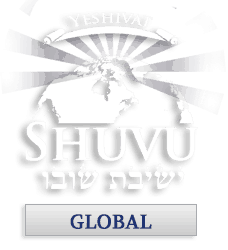Speak to the children of Israel saying, any person who becomes unclean from [contact with] the dead, or is on a distant journey, whether among you or in future generations, he shall make a Passover sacrifice for the Lord. In the second month, on the fourteenth day, in the afternoon, they shall make it; they shall eat it with unleavened cakes and bitter herbs.
Numbers 9:10-11
This week’s Torah portion contains the commandment of the second Pesach. This commandment takes a bit of explaining even above and beyond what Sifrei Bamidbar contains. To understand the commandment, one must understand not only the commandment of the Pesach itself, but also commandments regarding Tuma and Tahara.
In order to enter the Temple complex, one may not be in a state of Tuma. Therefore, if the fourteenth day of Nissan comes and one is in a state of Tuma from touching a dead body, one may not bring the Pesach offering. It is important to note here that the commandment in Hebrew is “la’asot,” that is to make the offering. The eating of the Pesach is actually a completely different commandment. To make the Pesach (to bring the offering to the Temple and sacrifice it) one must be in the state of Tahara because one may only make the Pesach in the place Hashem chose: the Temple mount.
Let us review for a moment the process of the Pesach. Pesach is one of the three pilgrimage festivals. Historians estimate that in Yeshua’s time, the population of Jerusalem (within the walls) swelled from approximately 70,000 to over 3 million. This means that there were between forty and fifty times the number of people normally in Jerusalem in order to celebrate the Pesach. Households were 40 to 50 times their normal size. Remember that the Pesach offering was made for each household, not each person. Only one person her household, ostensibly, the head of the household, was required to go to the Temple and make the Pesach offering.
What would happen if the head of the household were Tuma on the fourteenth of Nissan? Quite simply, another person from the household would go to the Temple and make the Pesach offering. Note that there is no requirement of Tahara for the eating of the Pesach offering, the requirement is only for the making of the Pesach offering. All Israel is required to eat the Pesach offering, regardless of Tuma and Tahara. So a different person, the eldest son for instance, would go to the Temple and make the Pesach offering, and the head of the household would be able to eat the offering as Torah commands.
It was a rare, but not unheard of, occasion that an entire household was in a state of Tuma for Pesach. Consider, for instance, a time of war. Soldiers touched dead bodies, lots of them. It was for these occasions that second Pesach applied. Therefore, one month after Pesach, these people who were in a state of Tuma would be able to make the Pesach again, the second Pesach. The sages also explained that the second Pesach applied for those who were too far away to make it to Jerusalem for first Pesach. The idea is that being distant because of Tuma is similar to being distant because of location. So using a kal v’chomer argument, if you are too far away in the Diaspora to make the first Pesach, you could come and make the second Pesach.
The commandment of the second Pesach is to be fulfilled, making the Pesach and eating it with matzah and maror. There is no requirement for eating matzah for seven days. There is no requirement to clean the house of leaven. The mitzvah is to make and eat the Pesach with matzah and maror, and that is it. Because of this, there is no modern-day equivalent to a celebration of second Pesach. There is no Temple. No one can make the first Pesach offering; there is also no ability to make the second Pesach offering. Consequently, until the Temple is rebuilt, we do not celebrate the second Pesach.
